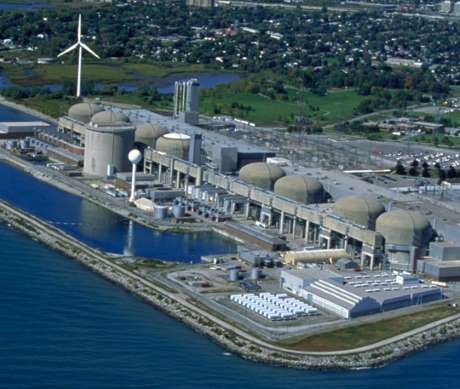Nuclear capacity is playing a significant part in the ongoing decarbonisation of the economy, Ontario Power Generation's CEO Jeff Lyash told a Canadian senate committee meeting last week.
 |
| Pickering (Image: OPG) |
Addressing the Senate Standing Committee on Energy, the Environment and Natural Resources meeting on the effects of transitioning to a low-carbon economy, Lyash said that to achieve its carbon reduction goals, Canada would effectively need to end the use of fossil fuel by 2050. "At a minimum, it will substantially reduce it and change its role significantly in our economy. Ontario’s electricity sector is already well down this path, currently representing less than 7% of total greenhouse gas emissions," he said.
By ending its use of coal in 2014, OPG has transformed itself into a major producer of clean power, Lyash said. "This remains North America's single largest action to combat climate change to date," he said.
Nuclear power from three nuclear power plants - OPG's Darlington and Pickering and Bruce Nuclear's Bruce - provide 62% of Ontario's electricity, and Lyash told the committee the long-term value of such "low-intensity carbon electricity" was "enormous". "Nuclear power helps Ontario move away from coal, and nuclear power makes intermittent renewable integration into the system possible," he said. "Looking forward, as Canada considers how to move towards a lower carbon economy, we would suggest a balanced approach - one that maximizes the role of all low-carbon technologies, such as nuclear, hydro, solar, wind and biomass; and one that can be levered through electrification to lower carbon emissions economy-wide."
OPG's generation fleet relies on nuclear and hydroelectricity, with Darlington and Pickering accounting for more than 6600 MWe of the company's 17,000 MWe of capacity. "OPG's power is now virtually free of smog and greenhouse gas emissions. And we produce this power at a cost that is about 40% lower than other generators in the province of Ontario," Lyash told the committee.
Investing in the future
Earlier this year the Ontario government approved a CAD 12.8 billion ($9 billion) project to refurbish the four Candu units at Darlington, starting in October, and also approved the continued operation of the Pickering plant to 2024. Lyash said the investment would result in CAD 14.9 billion in economic benefits for Ontario. Refurbishment will enable the plant to continue operating for 30 years. Pickering is currently licensed to operate until 2018, but Lyash said keeping the plant in operation until 2024 would ensure access to "safe, clean, low-cost electricity" during the refurbishment, while potentially avoiding the emission of eight million tonnes of greenhouse gases.
"A significant part of our success in helping the ongoing decarbonisation of our economy lies in preserving and expanding the nuclear production we have today. That's what refurbishment is about," he said.
Researched and written
by World Nuclear News




_18570.jpg)
_18938.jpg)
_33584.jpg)
_82983.jpg)





